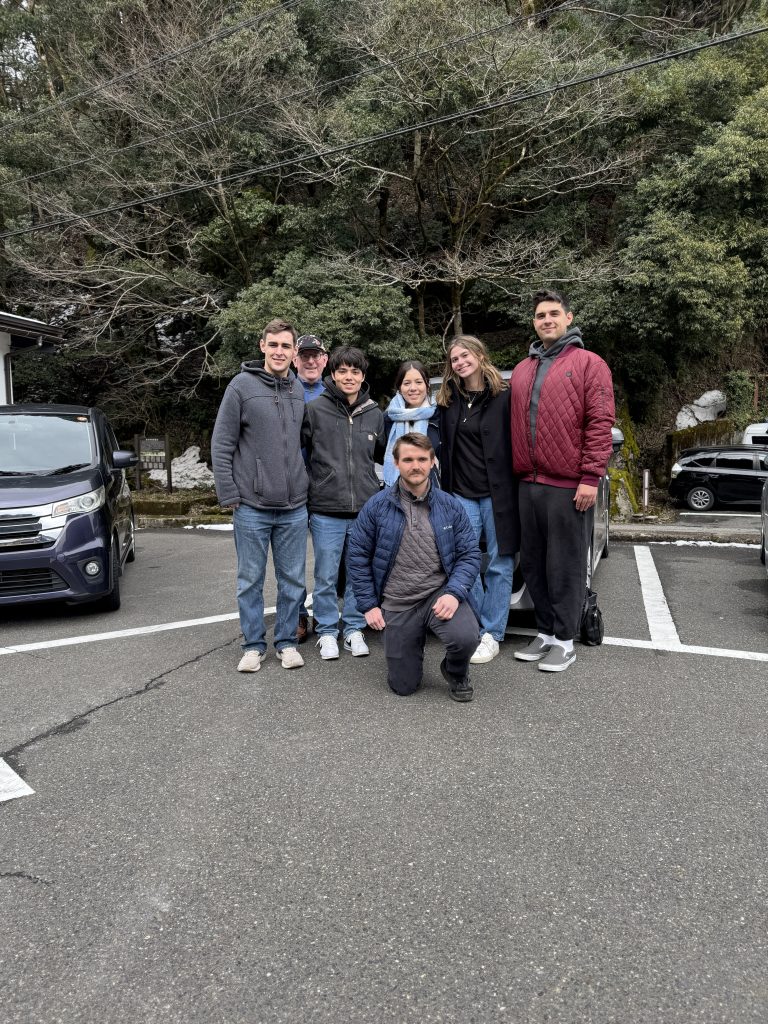
Summary
On Thursday, 20 March, we visited Tenryū Shiseizen-ji Temple and Daihonzan Eiheiji Temple in order to take LiDAR scans using the Matterport Pro3 scanner. Ultimately, our reason for coming was this day!
On Thursday, March 20, we engaged with our main project, capturing high-resolution LiDAR scans on a series of spaces that have served as the basis of our proof-of-concept in and around Fukui. In particular, we have focused on: Tenryū Shiseizen-ji Temple, the street leading up to Daihonzan Eiheji Buddhist Temple (of the Sōtō Sect, to which Bashō belonged – we haven’t received permission to scan on the grounds of the temple yet), and a small, nearby Hakusan Shintō Shrine. Bashō spent the night at the two temples before traveling back to stay with his friend in Fukui. In visualizing the space now, I realize that he probably didn’t pass by this shrine, but it provides a useful comparison.
Big thanks, by the way, to Mike Force of Matterfix.io, who rented us our equipment for this trip. He really went above and beyond when we discovered a mismatched cable in the equipment case. He had not one, not two, but three replacements sent…one within the US and two to Japan.
The day started well, and we were ready to go at 9:15am, after the morning rush had ended, and after the black ice had (hopefully / supposedly) melted. We mounted our trusted steed, a Toyota Noah and then…”beep, beep, beep…insert the card!…beep, beep, beep…insert the card!.” What card? No one gave us a card. It was a push-to-start ignition and a Hybrid, so I thought, maybe it’s like an old-timey diesel, where you have to let the plugs warm before starting. Then, after two minutes of pushing, cajoling, swearing, it just sprung to life. We never did figure this out and it gave me such palpitations at the end of journey I just kept leaving the car on!
We drove west to the town of Marouka, quite obviously a service center for local agriculture, and then drove back to the very lovely Tenryru-ji Temple. About this, Bashō wrote:
<汐越の松> 越前の境、吉崎の入江を舟に棹して汐越の松を尋ぬ。終宵嵐に波をはこばせて 月をたれたる汐越の松西行 一首にて数景尽たり。もし一辧を加るものは、無用の指を立る がごとし。丸岡天竜寺の長老古き因あれば尋ぬ。又金沢の北枝といふもの、 かりそめに見送りて、此處までしたひ来る。所々の風景過さず思 ひつゞけて、折節あはれなる作意など聞ゆ
At Maruoka, I called upon an old friend, the abbot of the Tenryū Temple. A man called Hokushi, from Kanazawa, had intended to accompany me for a short distance, but he had finally come all the way to Maruoka, unable to say goodbye. No sight on the journey had escaped his notice, and he wrote some moving poems. Now that we were parting, I wrote:
I’ve scribbled words, but
how to tear the fan apart –
goodbyes are so hard*
[Editor’s Note: *how to tear the fan apart now that summer had ended, a fan was no longer needed. In spite of this, Bashō seems to have impulsively scribbled some words on a fan, which made it all the more difficult to throw it away.]
We found the temple well tended but empty. A wtaer utility worker came to check the pipes while we were there, and an older woman walked by on a neighboring street.. Otherwise, solitude of cawing crows and the sound of a cold breeze through the cedars.
Then, after another frustrating five minutes of “beep, beep, beep…insert the card!” we drove into the mountains to Daihonzan Eiheiji. Here, Bashō wrote:
I went three or four miles into the mountains to worship at Eiheiji, the temple of the Zen Master Dōgen. I understand that he had some profound reason for avoiding the vicinity of the capital and for building his temple in such remote mountains as these.
今既別に望みて、物書て扇引さく余波哉十丁山に入て永平寺を礼す。道元禅師の御寺也。邦機千里を避て、かゝる山陰に跡をのこし給ふも貴きゆへ有とかや。
On the way up to Eiheiji Town, we past small restaurants on either side of the road with pretty impressive cloth billboards and brightly colored flags. Mika told us they were all selling buckwheat soba, the region’s specialty. Too bad we lacked the time to try them all right then and post a comparison review.
It is a truly lovely space, with huge cedars, overhanging cliffs, rushing streams, snowcaps…I imagine that each season has its own particular appeal, its own particular pleasant aromas, and its own particular charms.
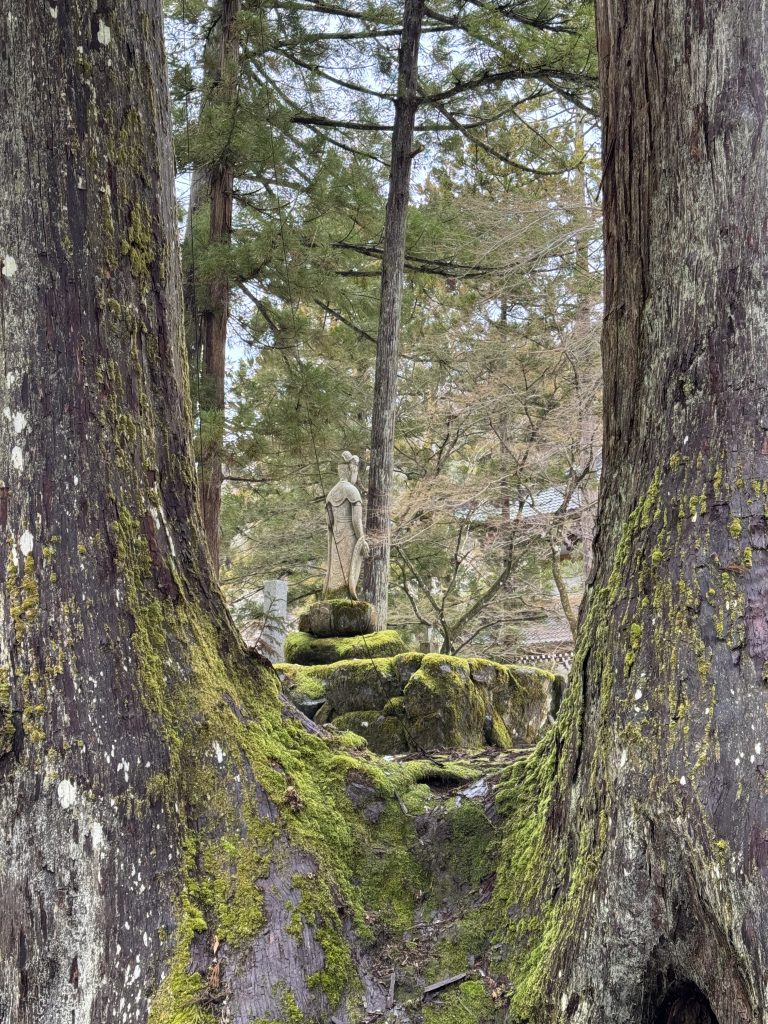
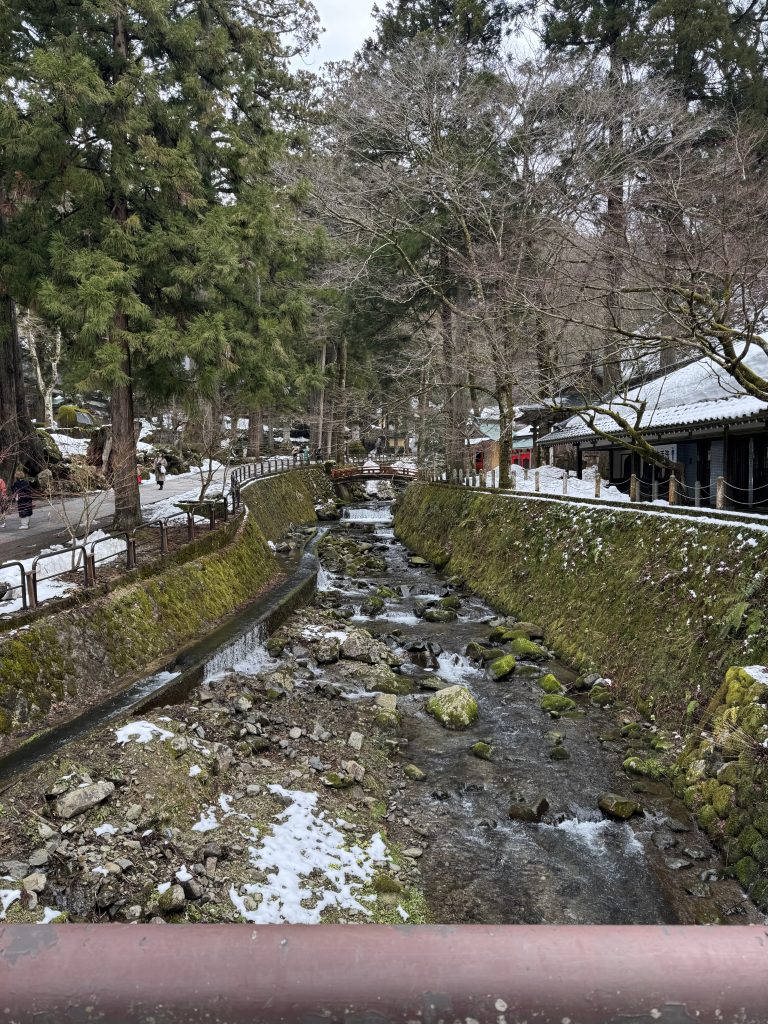
We parked at the bottom of the main street, carefully backing into a space so as not to back into a rushing river (no barriers to prevent this). We dismounted and then reconnoitered the main street. Everyone had jobs to do and I sent them off to do them. Sarah went and captured Go-Pro and iPhone images, Scott and Bryce tried to synchronize the Tabibito app, Dylan and Mika went to capture sound, and Alec and I went to capture scans with the Matterport.
Now, let’s be objective here. Two foreigners, one old guy (me) with a funny cap and one young guy (Alec) with a blond mustache and beard with a big black box whose middle part spun were not exactly stealth surveyors. Ten scans took us about an hour, and we got some – how do the young people say, it…side eye? – but prevailed.
The others succeeded in their work. So we succeeded in that regard. The culmination of a year of planning and the hard work of our students!
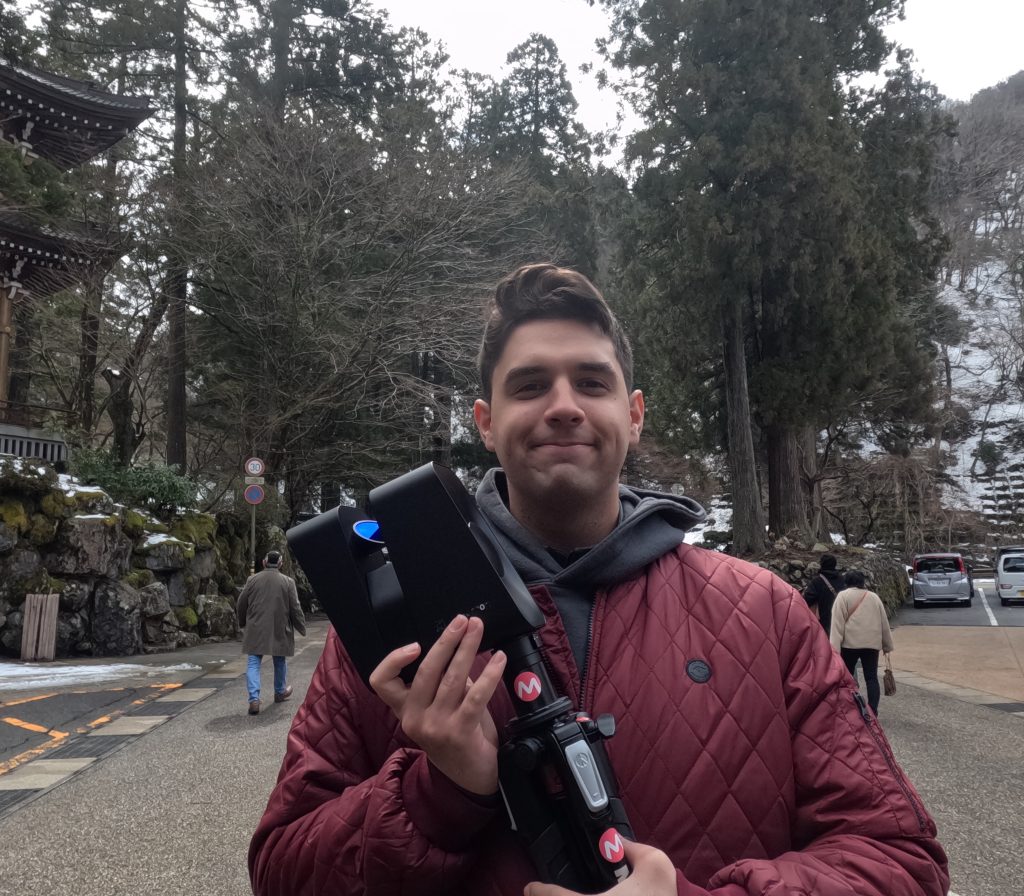
We concluded our time in Daihonzan Eiheiji with a lunch of soba in various forms right near the temple. We walked into the Temple area, but I was becoming nervous that we wouldn’t make it back to Fukui to return the car on time. So we skipped going into the temple itself, although certainly spent a lot of time around it, admiring its beauty.
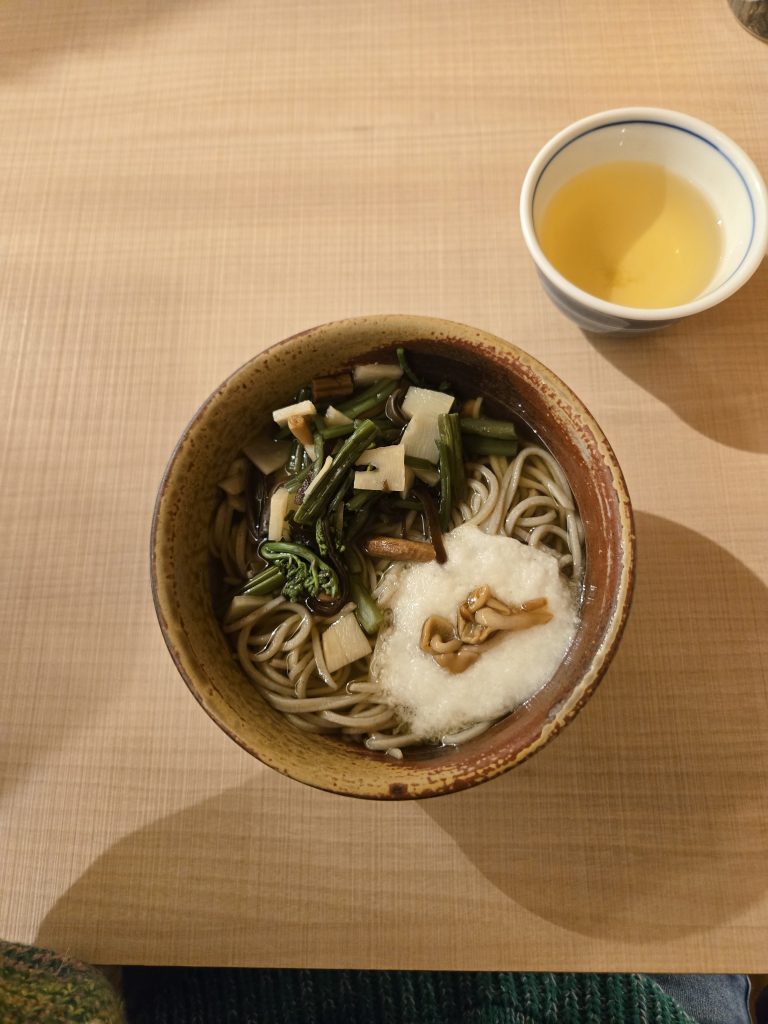
We had two additional stops. I wanted to acquire a Matteport scan of the nearby Hakusan Shintō Shrine and the tiny Narutakifudoson Buddhist Shrine at the base of a waterfall but right next to a recycling enter (interesting for comparisons). But we were starting to get a little tired and heading over the hill to Hakusan Shrine, we hit some pretty slippery roads…no guardrails, steep cliff, how do I explain my imagined results to the Dean? I had Sarah and Scott run over to the Shrine and take photos at least, and I decided to skip the Narutakifudoson Temple as the road to it was really tiny and right next to a river. Also, it won’t ultimately be a part of the journey as I had imagined because Bashō would have never come this way…he would have retraced his steps to go to Fukui.
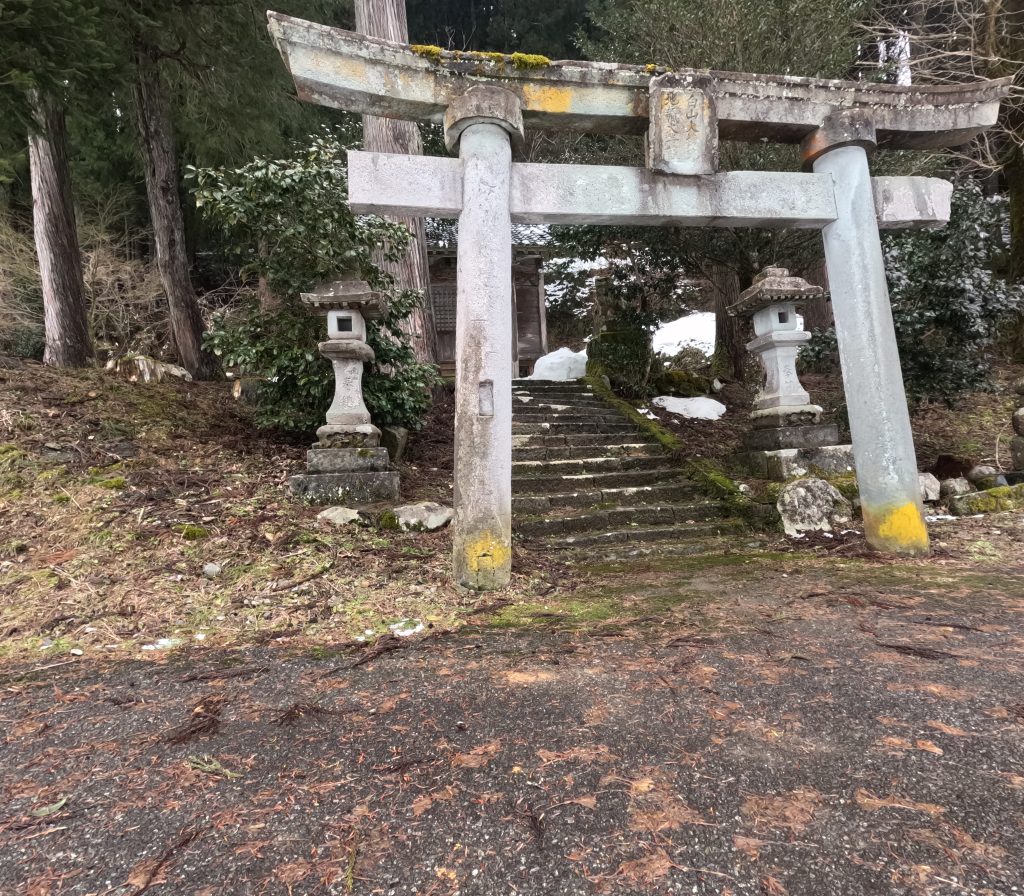
We returned to Fukui and had a relaxing evening separately and prepared for our journey to Kyoto.
